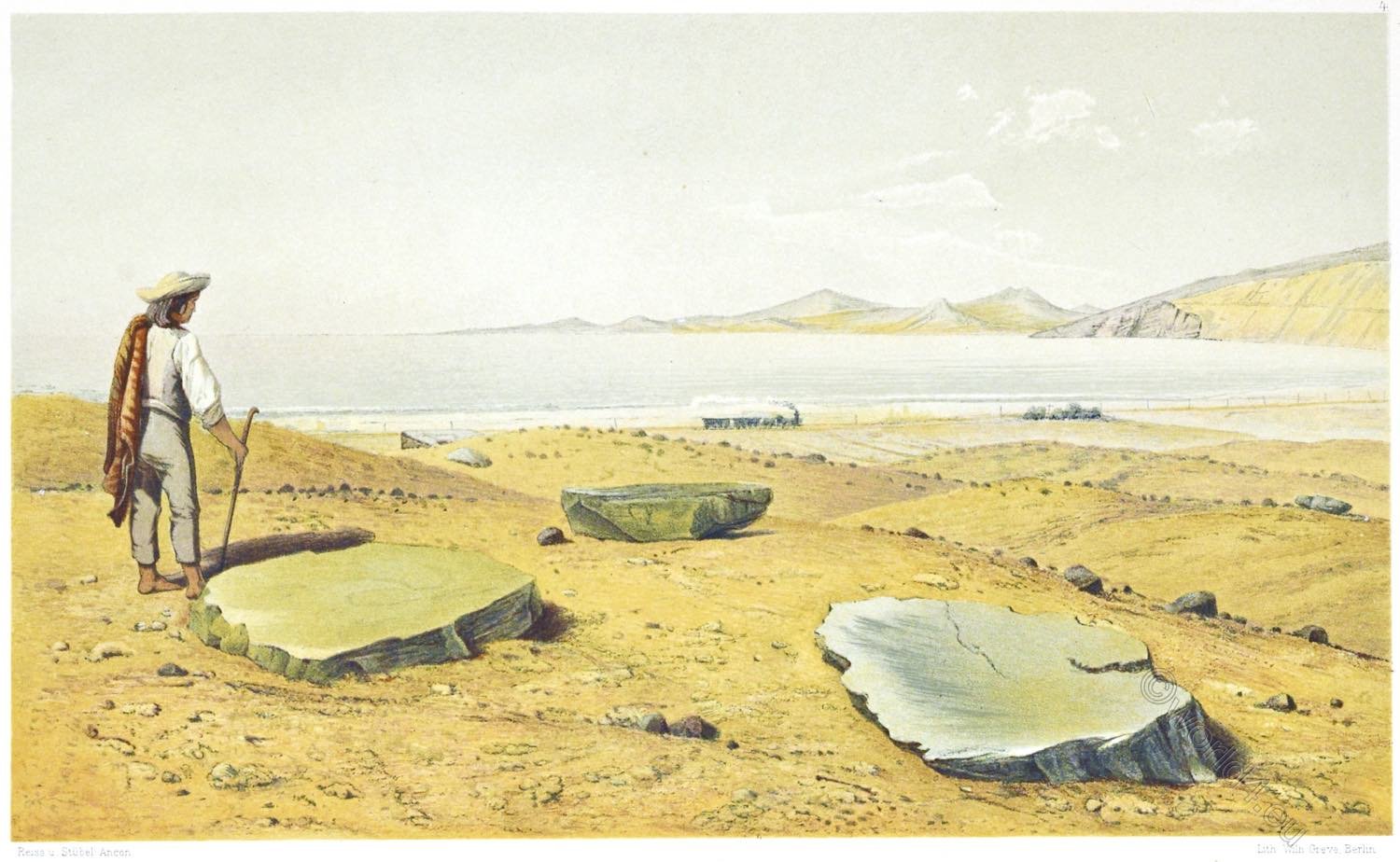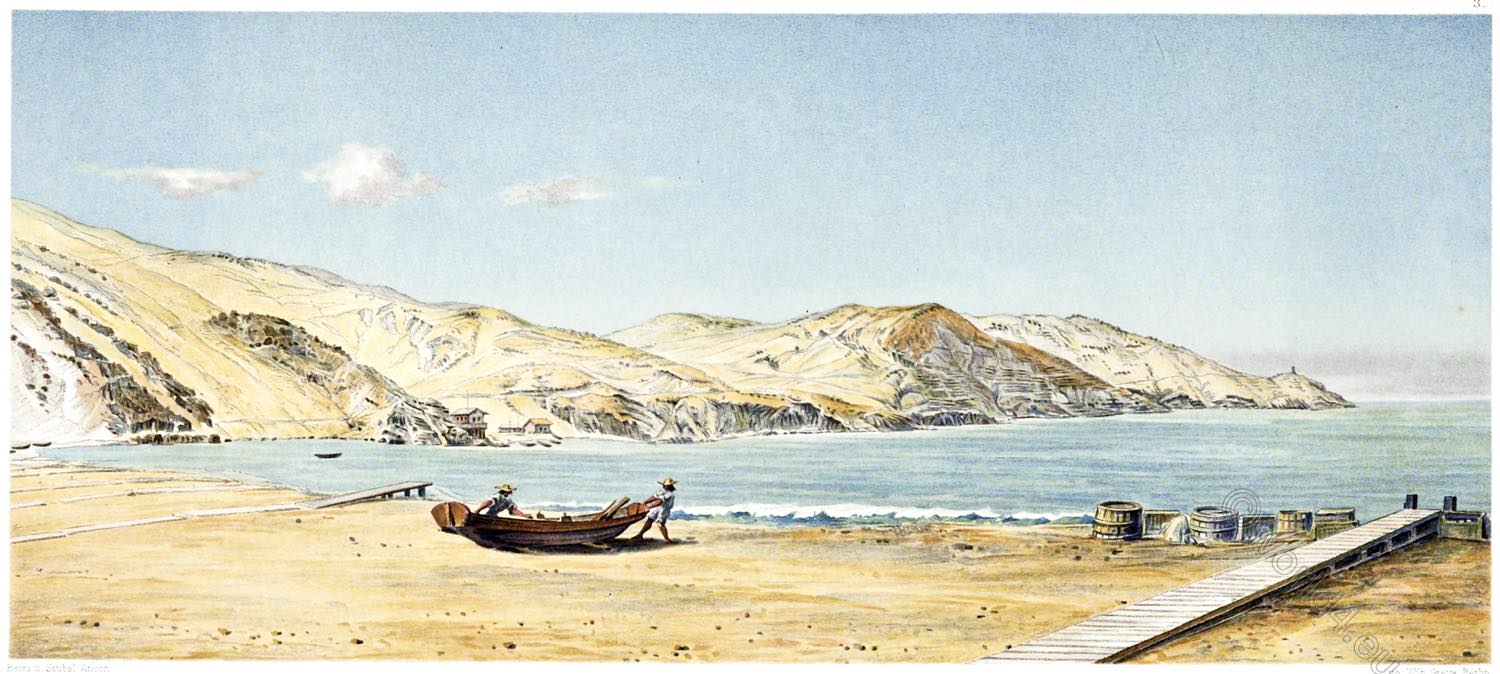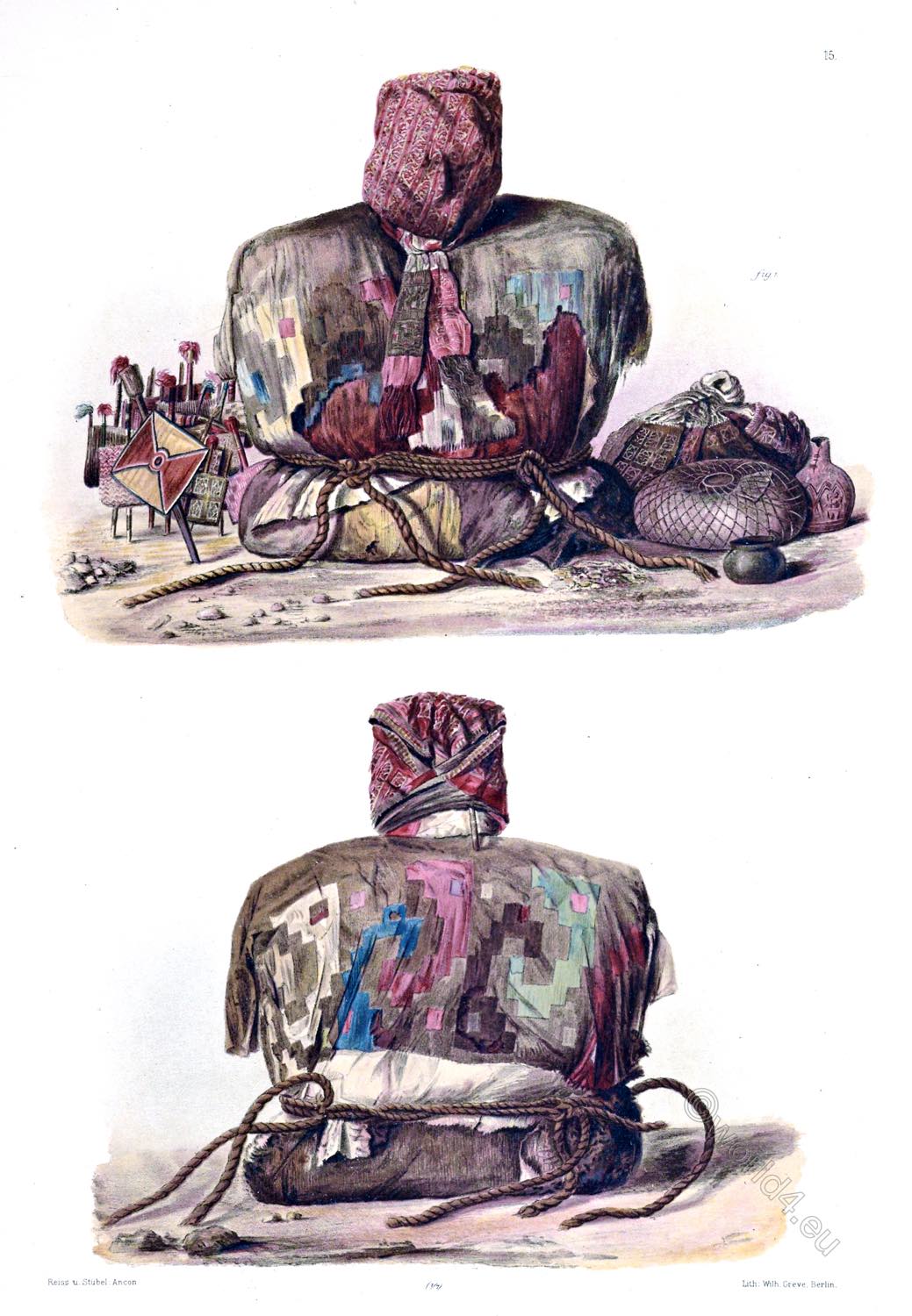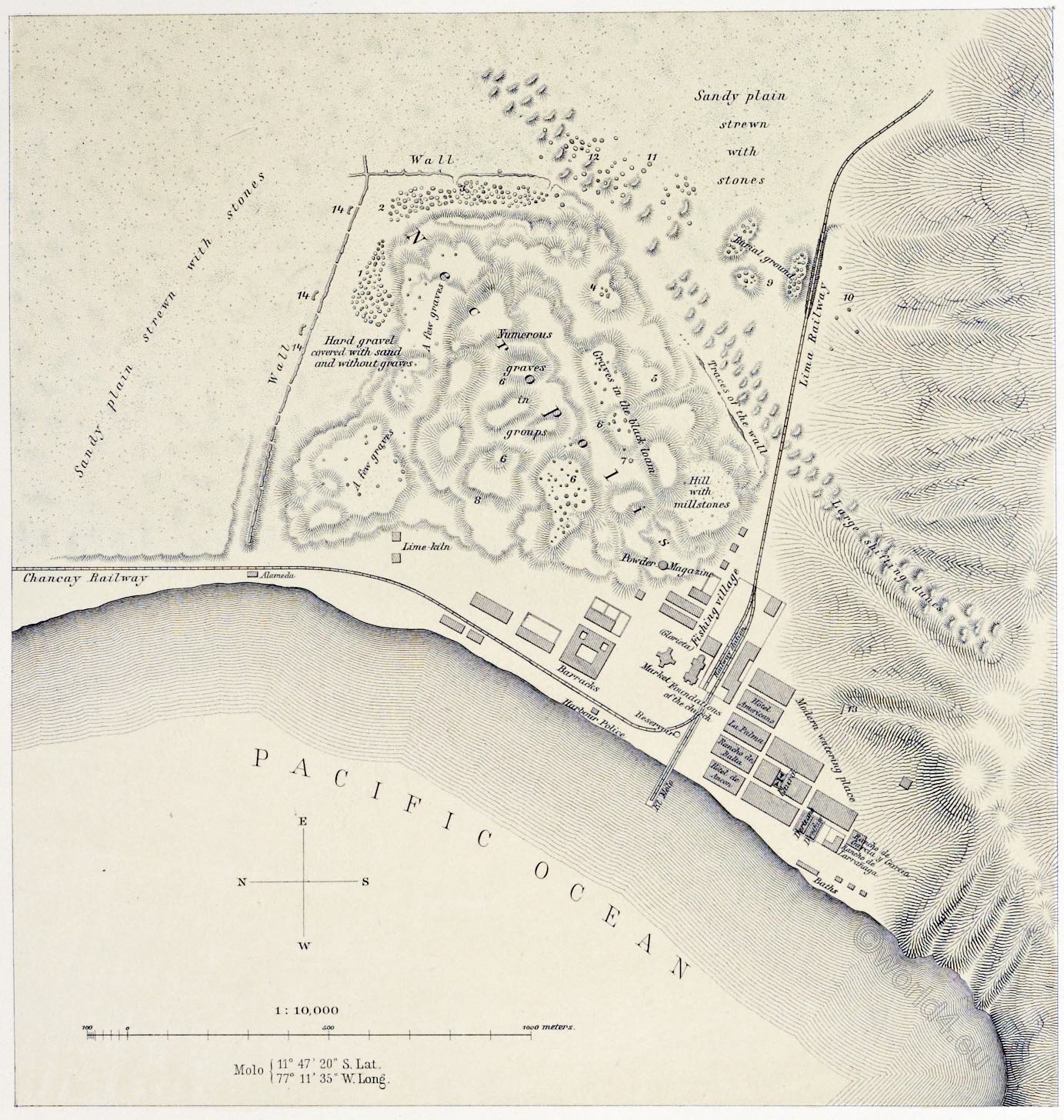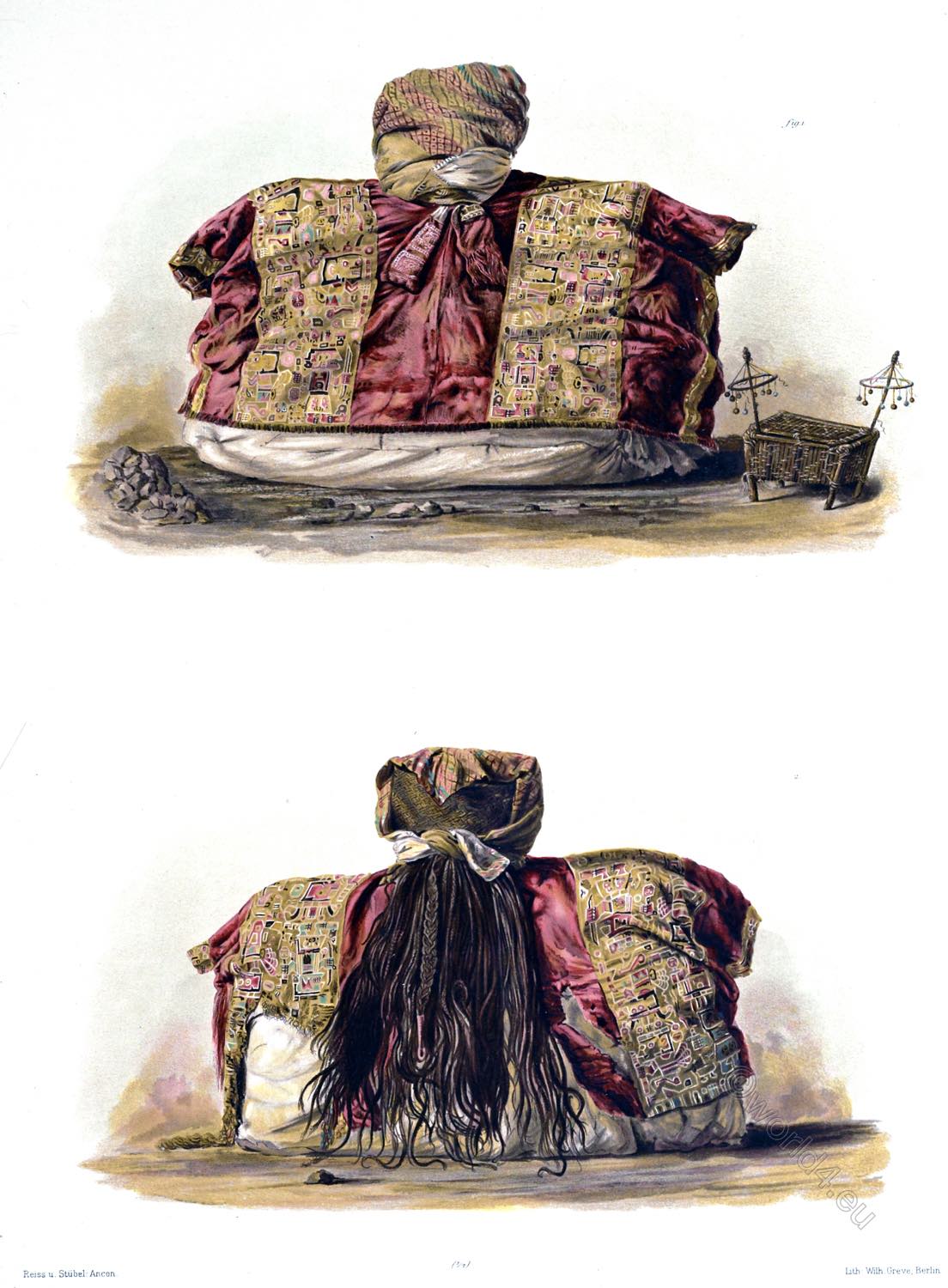
III. The Mummies in their diverse equipment.
a. False-headed Mummies.
SUMPTUOUS MUMMY PACK.
PLATE 16.
The Mummy, the front and back view of which are here figured, is assuredly the most remarkable hitherto discovered in the Ancon Necropolis. Its very form is striking, the peculiar disposition of the inner pack rendering the height disproportionately small compared with its breadth. No less noteworthy is the outer equipment, consisting of a finely woven woollen garment ornamented in the richest Gobelins manner, alike magnificent in colour and execution beyond any other found in this cemetery.
The false head is adorned with a wig artistically prepared with long tresses of human hair. But the chief peculiarity is betrayed in the inner pack, which, instead of the usual perfect, often well-preserved and mummified body, contains nothing but its bones rolled up in a small bundle (Plate 17).
The high rank of the deceased is evident from the peculiar style of burial and embellishment. The Mummy was found in a shallow grave together with two others poorly equipped, and surrounded by diverse tokens and parting gifts as shown in the section, Fig. 2 of Plate 10.
Fig. 1. Front view. The form of the whole pack, covered with a coarse cotton cloth, seems well adapted to the cut of the sumptuous garment intended to serve as its last adornment and outer clothing. Both the wealth of colour and choice design of this garment are thus displayed to the best advantage. It is woven in two pieces put together in such a way that the central red band is doubled in width. The essential portion of the highly coloured fabric is formed by two richly figured yellow strips, whose narrow edges, repeated in the side borders, serve both as a finish to the right and left, and as a trimming to the arm-holes (Plate 49).
The false head is wrapped in a bright cloth and decked with a “tendema” (Plate 77, Figs. 10—13). Below the chin the two red and brown end-pieces of a head-bandage hang over the breast. By the side of the mummy stands a work-basket of peculiar form (Plates 34, 86, 88).
Fig. 2. Back view. Here the most striking feature is the wig of the false head, whose flowing tresses fall below the tendema and head-covering wide over the back. The wig is so prepared that a fabric exactly fitted to the shape of the head contains the hair, which was usually parted and plaited in two tresses. In this instance over 200 narrow tresses are disposed round a broad central pig-tail.
Although here the garment is partly destroyed enough remains to show that the figures of the yellow strip, erect in front, are reversed behind, as conditioned by the uniform repetition of the same design. The only exception are the lowest pair.
Source: The necropolis of Ancon in Peru: a contribution to our knowledge of the culture and industries of the empire of the Incas being the results of excavations made on the spot by Wilhelm Reiss (1838-1908); Alphons Stübel (1835-1904), joint author; Wilhelm Greve, lithographer; Augustus Henry Keane (1833-1912), translator; Ludwig Wittmack (1839-1929); Rudolf Virchow (1821-1902); Alfred Nehring (1845-1904). Berlin: A. Asher & Co.; New York : Sole agent for America, Dodd, Mead & Company, 755 Broadway, 1880.
Discover more from World4 Costume Culture History
Subscribe to get the latest posts sent to your email.

